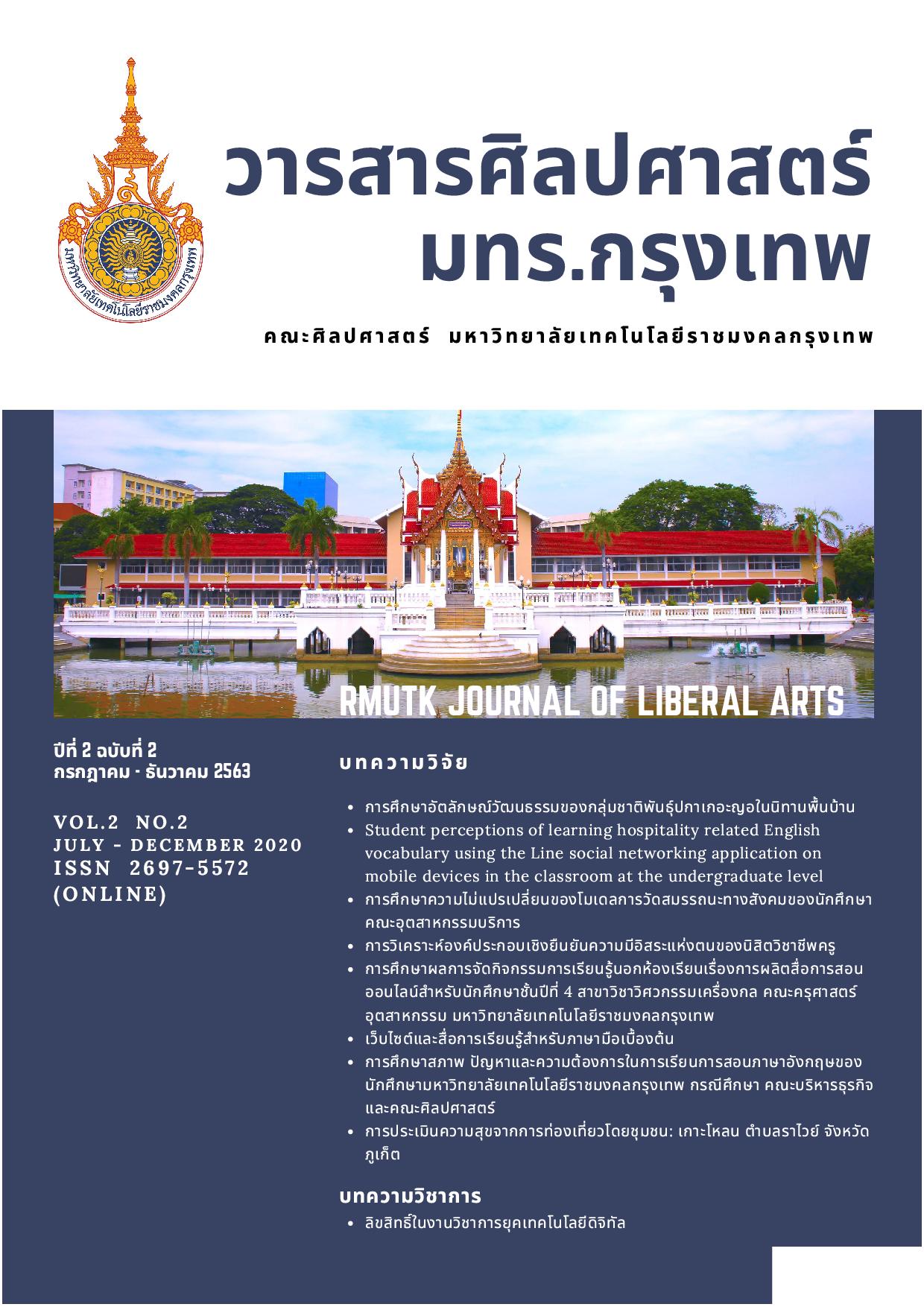A FACTOR ANALYSIS OF SELF-AUTONOMY FOR PROFESSIONAL TEACHER
Main Article Content
Abstract
The purpose of this research was to study factor analysis of self-autonomy for professional teacher. The samples of this study were three hundred sixteen for professional teacher of Srinakharinwirot University selected by purposive sampling. This research instrument used for this study was self-autonomy questionnaire with the discrimination ranges from 0.23 to 0.59 and the reliability coefficient of 0.87. The statistical was analyzed by confirmatory factor analysis. The research was measure model of self-autonomy for professional teacher in accordance fit with the empirical data (=1.22 df=1 p=.26 GFI=1.00 AGFI=0.98 CFI=1.00 RMSEA=0.02 SRMR=0.00). The factor of each, in descending order as follows: know your duty, Think and decide for yourself and emotional Regulation.
Article Details
References
เกศรินทร์ บริบูรณ์. (2559). การศึกษาองค์ประกอบพลังอำนาจแห่งตนของนักศึกษาคณะครุศาสตร์ มหาวิทยาลัยราชภัฎในพื้นที่ภาคตะวันออกเฉียงเหนือ. ปริญญานิพนธ์การศึกษามหาบัณฑิต สาขาวิชาการวิจัย และพัฒนาศักยภาพมนุษย์มหาวิทยาลัยศรีนครินทรวิโรฒ.
ชมพูนุท ร่วมชาติ. (2548). อนาคตของหลักสูตรวิชาชีพครูในทศวรรษหน้า (พ.ศ. 2550-2559). ปริญญานิพนธ์การศึกษามหาบัณฑิต สาขาวิชาการวิจัย และพัฒนาหลักสูตร มหาวิทยาลัยศรีนครินทรวิโรฒ.
พูลพงศ์ สุขสว่าง. (2556). โมเดลสมการโครงสร้าง. กรุงเทพฯ: วัฒนาพาณิช.
มานี แสงหิรัญและคณะ. (2551). การพัฒนารูปแบบความสัมพันธ์เชิงสาเหตุแบบพหุระดับของปัจจัยที่มีอิทธิพลต่อประสิทธิผลการผลิตครู. วารสารวิจัยและวัดผลการศึกษา. 6(1), 75.
สมโภชน์ เอี่ยมสุภาษิต. (2549). ทฤษฎีและเทคนิคการปรับพฤติกรรม. พิมพ์ครั้งที่ 5. กรุงเทพฯ: จุฬาลงกรณ์มหาวิทยาลัย.
สนติ บุญภิรมย์. (2557). การบริหารจัดการในชั้นเรียน (Classroom Management). กรุงเทพฯ: ทริปเปิ้ล เอ็ดดูเคชั่น.
สุรางค์ โค้วตระกูล. (2544). จิตวิทยาการศึกษา. พิมพ์ครั้งที่ 3. กรุงเทพฯ: จุฬาลงกรณ์มหาวิทยาลัย.
เสรี ใหม่จันทร์. (2553). การวิเคราะห์องค์ประกอบและการเสริมสร้างอิสระแห่งตนของนักเรียนวัยรุ่นโดยการให้คำปรึกษากลุ่ม.ปริญญานิพนธ์ การศึกษาดุษฎีบัณฑิต สาขาจิตวิทยาการให้คำปรึกษา มหาวิทยาลัยศรีนครินทรวิโรฒ.
ฤตินันท์ สมุทร์ทัย. (2556). การวิจัยนำร่องการพัฒนาหลักสูตรการผลิตครูสำหรับศตวรรษที่ 21. รายงานการวิจัย. เชียงใหม่: มหาวิทยาลัยเชียงใหม่.
Beckert, Troy E. (2005). Cognitive Autonomy and Self-Evaluation in Adolescence: A Conceptual. Investigation and Instrument Development. 9, 586.
Black, A.E, & Deci, E.L. (2000). The Effects of instructor’s Autonomy Support and Student’ Autonomous Motivation on Learning Organic Chemistry: A self-Determination Theory Perspective.Science Education. 84, 747.
Dworkin, Gerald. (1988). The Theory and Practice of Autonomy. Cambridge: Cambridge University Press.
Franken. (2001). Identity and Cultural Memory in the Fiction of A. S. Byatt. England: Palgrave Macmillan.
Noom, Marc. (1999). Adolescent Autonomy: Characteristics and Correlates. Delft: Eburon Publishers.
Noom, Marc J., Dekovic, Maja; & Meeus, Wim. (2001). Conceptual Analysis and Measurement of Adolescent Autonomy. Journal of Youth and Adolescence. 30, 588-590. (October).
Russel, Stephen; & Bakken, Rosalie J. (2002). Development of Autonomy in Adolescence. University of Nebraska: NebGuide.
Ryan, Richard. M. (1991). The Nature of the Self in Autonomy and Relatedness. In G. R. Goethals; & J. Strauss (Eds.), Multidisciplinary perspectives on the self. New York: Springer-Verlag.
Sheldon, Kennon M. (1995). Creativity and Self-Determination in Personality. Creativity Research Journal. 8, 27.
Williams, G.C & Deci, E.L. (1996). Internalization of Biopsychosocial Values by Medical Student: A Test of Self-Determination Theory. Journal Personality and Social Psychology. 70, 767.


